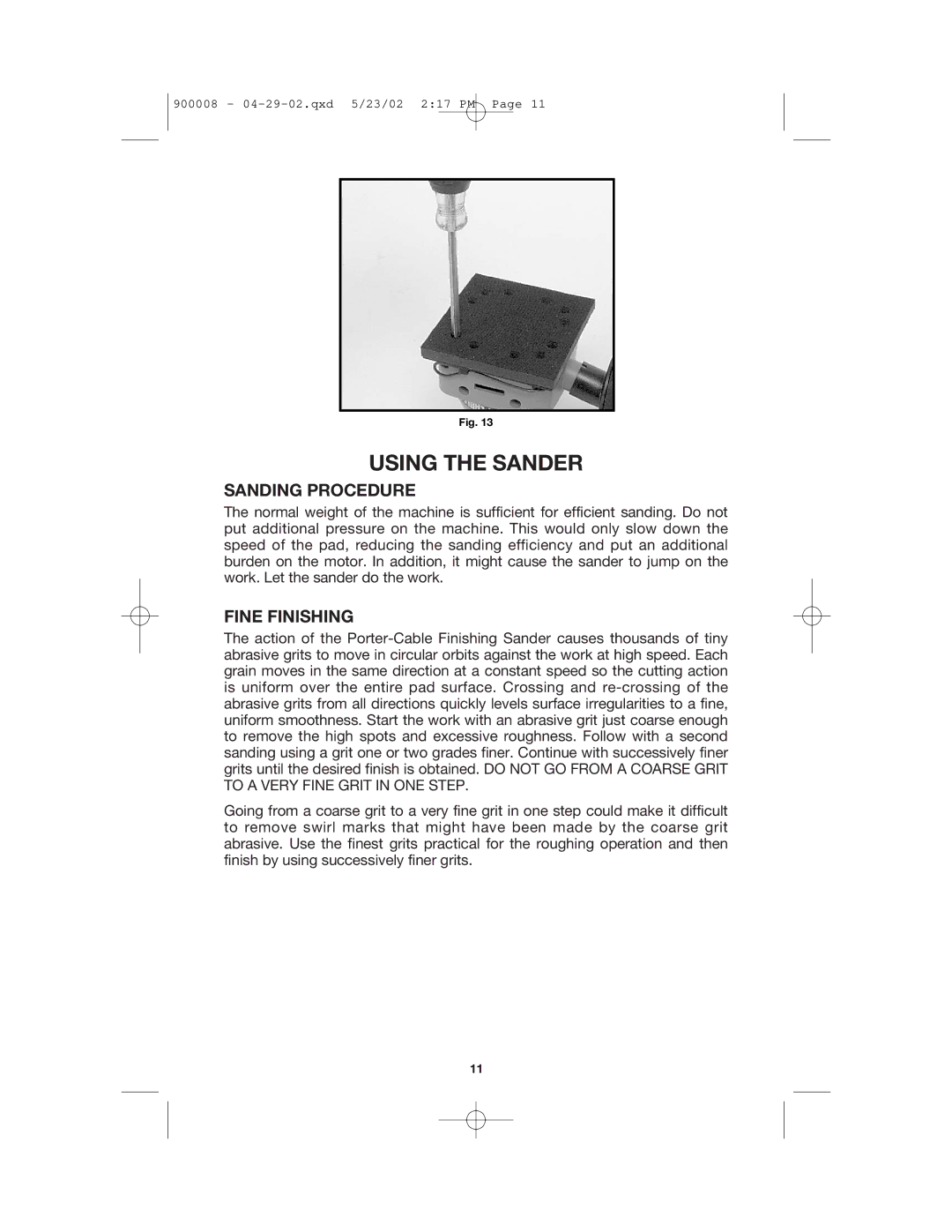900008 - 04-29-02.qxd 5/23/02 2:17 PM Page 11
Fig. 13
USING THE SANDER
SANDING PROCEDURE
The normal weight of the machine is sufficient for efficient sanding. Do not put additional pressure on the machine. This would only slow down the speed of the pad, reducing the sanding efficiency and put an additional burden on the motor. In addition, it might cause the sander to jump on the work. Let the sander do the work.
FINE FINISHING
The action of the Porter-Cable Finishing Sander causes thousands of tiny abrasive grits to move in circular orbits against the work at high speed. Each grain moves in the same direction at a constant speed so the cutting action is uniform over the entire pad surface. Crossing and re-crossing of the abrasive grits from all directions quickly levels surface irregularities to a fine, uniform smoothness. Start the work with an abrasive grit just coarse enough to remove the high spots and excessive roughness. Follow with a second sanding using a grit one or two grades finer. Continue with successively finer grits until the desired finish is obtained. DO NOT GO FROM A COARSE GRIT TO A VERY FINE GRIT IN ONE STEP.
Going from a coarse grit to a very fine grit in one step could make it difficult to remove swirl marks that might have been made by the coarse grit abrasive. Use the finest grits practical for the roughing operation and then finish by using successively finer grits.

